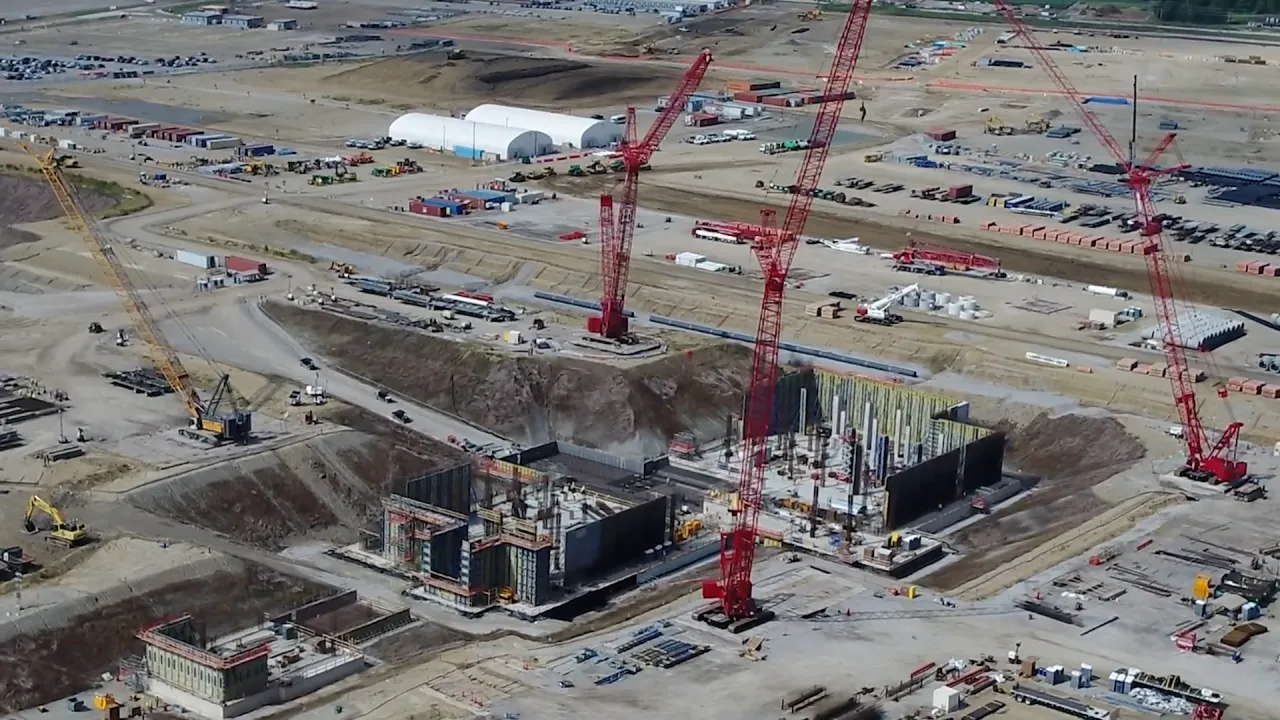Science and technology

Science and technology
Parma at the Crossroads: The New School District Leader Fights for the Future of Education Amid Financial Storms and a Mysterious Empty Plot
In this working-class suburb of Cleveland, where the industrial past still echoes in architecture and the memories of veterans, the Parma school district faces a critical juncture. As the 2025-2026 school year begins, Dr. Scott Hunt, a education veteran with over 35 years of experience, steps into the role of superintendent, inheriting not only thousands of students but also a host of challenges: from chronic funding shortages to the ghostly vacant lot where the legendary Parma High once stood. As insiders in Ohio’s educational circles well know, districts like Parma—with an aging population and a shrinking tax base due to industrial decline—often find themselves caught between ambitious reforms and harsh budget realities. But Hunt, with his reputation as a “messenger of hope,” promises to turn the page, transforming what could be a crisis into an investment in the future.Hunt, a native of nearby Girard, brings a wealth of experience spanning everything—from a teacher’s desk to the offices of superintendent, and even lecture halls at universities as an adjunct professor. His career, colleagues in Ohio’s educational associations say, has always been about “enriching lives”—a phrase he repeats with the conviction of a preacher. “I’ve always loved working with children, and my goal is to improve the education system,” Hunt says as he walks through the corridors of Parma Park Elementary, where the hum of children’s voices reminds everyone of the district’s true stake. While his predecessor, Dr. Charles Smialek, moved on to the thriving Pickerington district near Columbus after seven years in the role, Hunt enters his new position with an understanding of local dynamics: Parma, with its nearly 9,000 students from Parma, Parma Heights, and Seven Hills, recently earned four stars in the Ohio Department of Education’s annual report—an impressive improvement credited, insiders say, to painful reforms including school closures in 2023.But Hunt’s hope runs up against stark reality: the district needs new funds. The top priority is passing a 10-year emergency operations levy expected to raise around $23 million annually. For homeowners, that means an extra $20 a month for a property valued at $100,000—an amount Hunt artfully reframes not as a burden but as an “investment in the future.” “We say we want our community to invest in the future,” he emphasizes, citing his success in similar situations. In the Cardinal Local School District in Geauga County, where Hunt previously served, a tax passed in 2018 after 25 years of failure and three attempts—something he recalls with pride as if it were a heroic battle. In Parma, the last successful levy dates back to 2011, and this is already the fourth attempt in recent years, according to state archives. Without these funds, Hunt warns, the district risks cutting programs, transportation, laying off teachers, or even coming under state oversight by 2027—a scenario that has already played out in Ohio districts like Lorain and Youngstown, where financial crises led to mass protests and loss of talented educators.The residents I spoke with during my visit to Parma are divided, but many support Hunt enthusiastically—typical of communities where education is not an abstract concept but an investment in the next generation. “I think it’s a good change with new leadership,” says Jessica Po, a parent of schoolchildren, reflecting sentiments echoed on local forums and in cafes. Michael Macherelli, a lifelong resident, adds convincingly: “I don’t care if it costs me a few extra dollars. I want my kids to get the best education.” These voices resonate with a broader trend in Ohio, where, according to the Ohio School Boards Association, over 60% of districts rely on local taxes for operational expenses, and demographic shifts—such as youth migration to metropolitan areas—increase pressure. Hunt, understanding this, promises open dialogue: “We must be messengers of hope for our community,” he states, urging parents and students to share their views ahead of the November vote.But amid all these plans, an intriguing question hangs: what will happen to the site of the former Parma High School? Demolished in 2023 as part of district reorganization, this empty lot is a symbol of past losses and potential opportunities—lying idle, fueling speculation in local chats and board meetings. Hunt, with his strategic mindset, does not rule out ambitious ideas: “It’s definitely possible. An opportunity to have a campus. Maybe house our K-8 school there.” But he emphasizes caution: “There isn’t a clear plan yet,” promising community consultations after clearing the site soon. Ohio education insiders whisper that such sites often become multifunctional centers—from community parks to innovative campuses, like in nearby Cleveland, where former schools have become hubs for vocational education. In Parma, with its strong career and technical education programs already preparing hundreds of students for the workforce at no extra cost to taxpayers, such a transformation could act as a catalyst for renewal.Hunt, with his optimism, underscores: “When schools thrive, communities thrive.” Strong schools attract families and stimulate the economy—a lesson Ohio has painfully learned from districts that have fallen into decline due to chronic underfunding. As Parma prepares to vote, Hunt promises transparency and dialogue throughout the year. Will this “new beginning” be a turning point or just another failure? As is often the case in American education, the answer lies in the hands of voters—and in the hands of leaders capable of turning taxes into dreams.
01.10.2025

Science and technology
Scammers with artificial intelligence steal the faces of ordinary Americans: how a tailor fights for his business
In a world where digital technologies promise limitless possibilities, George Tsaftrides, owner of a family men's clothing tailor shop in this quiet Midwestern town, finds himself at the epicenter of an alarming epidemic. His face, voice, and even manner of speaking—all have become weapons in the hands of scammers who use artificial intelligence to create fake profiles and videos. This is not just an isolated incident; it is part of a broader digital pandemic where deepfake technologies are turning ordinary entrepreneurs into unwitting actors in scam schemes that cost millions of dollars each year.Tsaftrides, a 60-year-old artisan with over 40 years of tailoring experience, turned his TikTok account "George The Tailor" into a genuine hit: over 40,000 followers watch his advice on fabric choices, secrets of perfect tailoring, and everyday stories from George Menswear and Tailoring. "I explain to people how to use the machine and how to sew, and they appreciate it. I like that we help people," Tsaftrides said in an interview, sitting at his work desk surrounded by rolls of wool and silk. This online success has led to a real sales boom: "We sell suits, and I never dreamed I would sell so many suits in a year," he added with a smile through his fatigue.But behind this façade of prosperity hides a dark side. Tsaftrides’s daughter, Daisy Yelichek, who manages the store alongside her father and runs the social media accounts, began noticing suspicious profiles. "Page after page with his face lead to various websites, which seem to be direct delivery sites," she said. These fake profiles appear on TikTok, Instagram, YouTube, and Facebook, offering cheap clothing or soliciting donations under fabricated pretenses. In some videos, Tsaftrides allegedly pleads for help: "They lie saying that my mother is ill with cancer and he’s trying to pay for her treatment. No, my mother is working right now, she is very healthy, thank God. I cannot stand these lies that play on people's feelings, especially when there are sick people who truly need help," Yelichek protests.This type of fraud, known as "pity baiting," is only the tip of the iceberg. According to my insider sources from the tech industry, generative AI tools such as deepfake creation technology have made such schemes accessible to anyone with basic skills. By 2025, according to the Federal Trade Commission, losses from online scams involving AI exceeded $10 billion, with small businesses like Tsaftrides’s becoming easy targets due to their authentic online presence. Incidents like these are multiplying: from pastry shops in California to Japanese knife sellers in New York, where scammers clone owners’ faces to promote fake products. Even celebrities are not immune, but for small businesses, this could be a deadly blow to their reputation.Yelichek repeatedly blocked and reported these accounts, but they reappear like a hydra. "I even contacted Shopify, but they couldn’t help. They said there’s basically no way to find these people," she complains. This helplessness in the face of tech giants is a common problem faced by thousands of entrepreneurs. Jess Myers, a law professor at the University of Akron studying digital law, praises the family’s approach: "You’re kind of left alone to solve your problems. What George and his family did, in my opinion, was the right step." They made a video clearly stating that the only real store is at 4937 Whipple Avenue NW in Canton.In conversations with Silicon Valley experts I have spoken with over the years, it becomes clear that platforms like Meta and TikTok are slowly responding to such reports due to the volume of content: research shows that over 125 Facebook pages regularly spread AI-generated spam to grow their audiences. But Tsaftrides does not give up. "I wish people would stop stealing other people's faces to make money; it's wrong. That's theft. Create something of your own," he says with the firm conviction of a craftsman who knows the value of genuine work.The lesson for consumers is simple but crucial: "Before supporting a business online, do your research and learn about it because you work hard to earn your money and want it to go to the right place," Yelichek advises. In an era where reality and fakery merge into a single flow, stories like this remind us: trust is not an algorithm but a human choice. If no measures are taken, the deepfake economy risks undermining the foundation of small businesses, which are the heartbeat of the American economy.
19.09.2025

Science and technology
Apple Unveils iPhone 17: Ultra-Thin Design, Revolutionary Cameras, and Prices
In a world where innovation is often merely evolution rather than revolution, Apple has once again demonstrated its mastery by unveiling the iPhone 17 lineup — four models that do not just upgrade the smartphone but reimagine its role in our daily lives. From the ultra-thin iPhone 17 Air, reminiscent of an artifact from the future, to powerful Pro versions equipped with cameras worthy of Hollywood studios, the new series promises to combine elegance with uncompromising performance. This is not just an upgrade — it’s a strategic move aimed at recapturing dominance in the age of artificial intelligence and 5G, where competitors like Samsung and Google are trying to catch up but often get lost in the labyrinth of their own ambitions.
The presentation, streamed on Apple's official YouTube channel, turned into a spectacle where Tim Cook, with his characteristic charisma, announced a "new definition of mobility." According to sources in the supply chain, Apple has invested billions in optimizing manufacturing to make these devices not only more powerful but also more environmentally friendly — with recycled materials that reduce the carbon footprint by 20% compared to previous generations. This is not just marketing: in an era when global regulators pressure tech giants over climate change, Apple is playing ahead, turning sustainability into a competitive advantage.
Let's start with the basic model — the iPhone 17, which, despite its "ordinary" appearance, sets new standards for energy efficiency. Powered by a 3nm A19 chip with a 6-core CPU (two performance cores for heavy tasks and four efficiency cores for daily use) and a 5-core GPU featuring second-generation Dynamic Caching and improved image compression, this smartphone promises to run faster than ever. The battery, designed for a full day of intensive use, including up to 8 hours of video playback, charges in a flash: just 10 minutes of plugged-in time is enough for a full day of viewing. The body, reinforced with Ceramic Shield 2 with a new coating, is three times more resistant to scratches and bends — ideal for those leading active lifestyles like millions of users. Storage starts at 256 GB, and the color palette — from elegant Lavender to calm Sage — adds a personal touch. The price starts at $799, with pre-orders already available and sales beginning September 19. Insiders whisper that Apple secretly tested this model with focus groups, and feedback highlights how the A19 makes the leap from iPhone 15 or 16 feel like a jump into a parallel universe of performance.
But the real star is the iPhone 17 Air — the thinnest smartphone in Apple’s history, measuring only 5.6 mm thick, making it resemble a work of art rather than a gadget. Inspired by rumors of the “iPhone Slim,” circulating in the industry for years, this device features a 6.5-inch ProMotion display (up to 120 Hz), an Always-On Display, and a peak brightness of 3000 nits — perfect for bright sunny days or night shots. The titanium body, protected by nanocrystalline Ceramic Shield, is not only lightweight but also durable. The C1X modem is twice as fast as the predecessor and 30% more energy-efficient, while the eSIM-only design frees space for a battery that provides up to 40 hours of video playback with a MagSafe pack. Fusion cameras with four focal lengths (13, 26, 28, and 35 mm) and dual recording modes (1x and 2x) turn the Air into a tool for creators: the front square camera with Center Stage automatically keeps you in focus, and Action Mode stabilization ensures steady handheld videos, as stable as on a tripod. The A19 Pro with neural accelerators promises performance akin to a MacBook Pro — imagine editing 4K videos directly on your phone without lag. Accessories like the textile TechWoven case or ultra-thin case under 1 mm complement the aesthetics. Priced from $999, it is a premium choice for those who prioritize form above all else.
For professionals, Apple has prepared the iPhone 17 Pro and Pro Max, which, according to Cook, "redefine Pro." With a high-thermal-conductivity aluminum body, a new cooling system via a monolithic design, and a Ceramic Shield back that is four times more resistant to cracks, these models promise stability 40% higher than the iPhone 16 Pro. Three 48 MP rear Fusion cameras with options for 1x, 2x, 4x, 8x telephoto, and 40x digital zoom, plus an 18 MP front camera with Center Stage, make them the equivalent of “eight professional lenses in your pocket.” Dolby Vision HDR video, 4K120, ProRes Log, ACES, and even ProRes RAW with Genlock synchronization — a cinematographer’s dream. The Pro Max boasts a record 39 hours of battery life, and the 2 TB storage option makes it ideal for cloud-based workflows. Colors — silver, deep blue, and cosmic orange — add more charm. Prices: Pro from $1099, Pro Max from $1199. Insider sources in Apple Labs hint that these cameras will incorporate AI features similar to those in Vision Pro for automatic content editing — a step that could revolutionize social media.
In Ukraine, where the “apple fever” is always accompanied by local nuances, the new iPhones are already appearing for pre-order in online stores: from ₴41,200 for 128 GB up to ₴65,920 for 512 GB, with about 5% prepayment. These prices are higher than in the US due to 20% VAT, customs duties, certification, logistics, and currency fluctuations — plus geopolitical risks that complicate supply chains. It is expected that the devices will arrive by the end of October 2025, and based on past releases, demand will explode despite premium prices. All models will run on iOS 26 with a redesigned Liquid Glass interface, improved notifications, and updates to Apple Music — an interface that makes the iPhone not just a phone but a part of an ecosystem where privacy and integration are protected.
In conclusion, the iPhone 17 is not just a gadget; it’s a statement about how Apple continues to set the rules of the game. Will competitors withstand this pressure? Only time will tell, but for fans and skeptics alike: Cupertino has once again made the world wait in anticipation.
09.09.2025

Science and technology
Ukrainian Teacher Unveils Secrets of American Education
In a world where education often becomes a battleground for the future of nations, the story of one Ukrainian teacher sheds light on striking contrasts between systems separated by an ocean and decades of reform. Valeria Buchkovska, a former teacher from Ukraine now teaching at an American school, shared her daily routine on Instagram, surprising thousands of followers and sparking lively discussions on social media. Her story is not just an anecdote – it is a window into the American education model, where the balance between work and life is not a luxury but the norm, attracting talent from around the world, including those fleeing war and economic instability.
In the United States, where teachers' unions like the American Federation of Teachers vigorously defend workers' rights, a typical teaching day rarely exceeds 7 hours, with a focus on efficiency rather than exhaustion. According to the National Center for Education Statistics, an average public school teacher in the US spends about 5-6 hours per day with students, dedicating the rest of the time to planning and professional development. This sharply contrasts with Ukraine, where, based on my observations during trips to Kyiv and Lviv, teachers often work 8-10 hours, plus unpaid evening checks of notebooks or preparation for state exams, leading to burnout and mass attrition.
Having emigrated to the US after the full-scale invasion of Ukraine by Russia in 2022 – like thousands of her compatriots – Buchkovska describes her day with almost the enthusiasm of a pioneering discoverer. "My official work begins at 9:00 am," she writes. Waking up at 7:00, she has time for peaceful preparations, arriving at school early to get ready. At 8:55, the bell rings, and teachers collectively meet children in the yard – a ritual emphasizing community and safety, typical for American schools, where emotional well-being of students is part of federal programs like No Child Left Behind or its successors.
She conducts lessons in core subjects – mathematics, reading, science – but only 4.5 hours a day with her own class. The rest of the time, children are with specialists in music, art, physical education, or the library, allowing Buchkovska to rest, eat, and prepare. "During this time, I can eat myself and prepare for the next lessons," she notes, emphasizing a simple but revolutionary idea for many immigrants: a teacher is not a machine but a person with needs. Once a month, there is a 45-minute pedagogical meeting before the start of the day, and at 3:30 pm, she accompanies children to the school bus, and that’s it. "School quickly empties out because no one stays after lessons until night like often happened in Ukraine. Extra work time here is unpaid," she adds, touching on a painful topic for Ukrainian teachers, where overtime hours are often unpaid “volunteering.”
This story resonates against the broader context: since 2022, over 100,000 Ukrainians have found refuge in the US, many of them professionals like Buchkovska, integrating into local systems. According to insider information from my sources in the US Department of Education, such immigrants often become catalysts for change, bringing a fresh perspective to multicultural education. But not everything is perfect: American teachers face challenges such as low salaries in some states (average around $65,000 a year, with variations) and staffing shortages, which led to strikes in Los Angeles and Chicago in recent years. However, as Buchkovska’s experience shows, the structure of the workday – with clear boundaries and support – makes the profession attractive, especially for those used to the chaos of post-Soviet realities.
In a world where education determines the competitiveness of nations, Buchkovska’s story reminds us: real reform begins not with textbooks but with respect for those who teach them. For Ukrainians dreaming of a new life, this is not just a story – it is a roadmap to a better balance, where work serves life, and not the other way around.
03.09.2025

Science and technology
Heavenly Revival: Air Shows in America Win a New Generation, Starting with a Roar Over Lake Erie
When the sun rises over Lake Erie this weekend, Burke Lakefront Airport will transform into an arena of celestial wonders: jet engines will roar, pilots will perform dizzying maneuvers, and the air will be filled with the scent of aviation fuel and adrenaline. The Cleveland Air Show, which starts on Saturday and runs through Monday, is not just a conclusion to the Labor Day weekend — it symbolizes a broader renaissance of aviation spectacles across the United States, where attendance is not only maintaining levels but setting records despite predictions of an 'aging' audience.We have seen airshows evolve from nostalgic relics of the Cold War to dynamic cultural phenomena. This year’s Cleveland show theme — "Rock The Land" — perfectly reflects this shift: it’s not just airplanes in the sky, but a pulsating fusion of patriotism, technology, and entertainment that attracts youth eager for real experiences in the digital era of screens."Since the pandemic began, similar to PGA golf tournaments, airshows nationwide are experiencing a real boom in popularity," — said Kim Dell, executive director of the Cleveland Air Show, in a conversation with me. Under her leadership, this event, which has been running for over half a century, has earned prestigious awards, including 'Airshow of the Year' from World Airshow News and marketing accolades from the International Council of Airshows (ICAS). ICAS data, based on 2023 surveys, confirm a trend: the average age of adult attendees has decreased to less than 39 years, with a focus on the 30-50 age group. The percentage of spectators over 60 has declined, while the number of youth up to 40 has increased — a small but steady growth signaling a generational shift.This evolution is no coincidence. COVID-19 pandemic acted as a catalyst: people tired of isolation gravitated towards open spaces, where the roar of engines and aerial spectacles offer escapism unavailable in virtual reality. Add in social media’s influence — TikTok and Instagram are flooded with viral videos of aerobatics, drones, and parachutists — and you understand why airshows have become magnets for Generation Z and Millennials. According to ICAS, annually, 325-350 such events are held in the U.S. and Canada, attracting 10-12 million visitors overall, with record-breakers like the EAA AirVenture in Oshkosh, Wisconsin, gathering over 686,000 people in 2024 — an all-time record.In Cleveland, where the show has been held since 1964 as the successor to the legendary National Air Races of 1929-1949, the economic impact is impressive: according to Enigma Research 2024, the event generates over $13.1 million for the local economy, attracting tourists from beyond Northeast Ohio. Its unique lakeside location transforms the show into a hybrid of sporting competition and summer festival: it’s not just about watching but engaging — talking to pilots, touring aircraft, participating in STEM exhibits. "The airshow is a patriotic and emotional spectacle, different from sporting events where spectators sit in seats. Our visitors walk around, socialize, even enter cockpits," — Dell noted.This year’s headliners will include the U.S. Air Force Thunderbirds with their diamond formations and supersonic maneuvers — alternating with the Navy’s Blue Angels, ensuring freshness. They will be joined by civilian aerobats, military demonstrations, vintage planes, and a new feature: Red Bull Air Force with a helicopter flying upside down. "They are the only ones in the world doing this, and they will truly 'give you wings,'" — Dell laughs. Additional attractions include jet-truck races with aircraft, interactive exhibits, and tours of unique aircraft, making the show accessible to families: the average ticket price nationwide is about $35, and Cleveland keeps within these bounds, offering premium options and packages.On a national level, the picture is equally compelling. SUN 'n FUN in Florida attracts over 200,000 annually, the Pacific Airshow in California up to 700,000 on the beach, and the free Chicago Air & Water Show draws a million. As a veteran who has covered similar events from Farnborough in England to Oshkosh, I am convinced: airshows are evolving by integrating drones, virtual reality, and an emphasis on education to combat digital apathy. They are no longer just about nostalgia — they are about the future, where technology meets human spirit.In Cleveland, where attendance in recent years has spanned all 50 states and 14 countries, the show remains an institution: families picnic, children with wide eyes watch in awe, youth seek adrenaline. The economic impact runs into millions, but the emotional one is priceless. As trends for 2025 show, with calendars filled with top events from VERTICON to AUVSI XPONENTIAL, airshows are not just surviving — they are soaring into a new era.Tickets for the Cleveland National Air Show are available at clevelandairshow.com. The event will take place August 30-31 and September 1 at Burke Lakefront Airport, 1501 N. Marginal Rd. Don’t miss it — the sky calls.
30.08.2025

Science and technology
Intel Factory in Ohio: Delays, Scandals, and Political Turmoil
The giant Intel semiconductor manufacturing plant in central Ohio, once announced as a key element of America's technological revival, is mired in delays, financial troubles, and an increasingly loud political controversy. The promised thousands of jobs, billions of investments, and the return of microchip production to American soil have turned into accusations of incompetence, fraud, and suspicious ties to China.On Thursday, Ohio Senator Bernie Moreno, a sharp-tongued Republican, fueled the fire by joining former President Donald Trump in calling for the resignation of Intel CEO Lip-You Tan. The reason — a Reuters report that Tan invested hundreds of millions of dollars in Chinese companies linked to the Beijing government. This news sparked concern both in Washington and in Columbus. Moreno went further, calling for a federal investigation into possible fraud related to the ongoing delays in building the Intel plant in Ohio.The $20 billion-plus project, loudly announced in 2022, was supposed to be operational by summer next year, producing advanced microchips to strengthen American supply chains. But progress has been slow as a snail. “Expecting them to start chip production by mid-2025 was unrealistic,” said Dorsey Heiger, executive secretary-treasurer of the Columbus/Central Ohio Building Trades Council. Heiger’s disappointment is palpable: Intel promised to employ up to 8,000 workers at the peak of construction, but currently only about 1,200 are on site. “There are no jobs,” he says. “There’s no momentum.”The project’s problems are not limited to logistics. Ohio taxpayers have invested hundreds of millions in infrastructure — roads, utilities — to support the plant, but completion deadlines have been pushed back to the 2030s. State Senator Bill DeMora, a Columbus Democrat, does not hide his anger: “We were sold empty promises. There are no jobs, no economic boom, only inflated real estate prices and complete emptiness.” DeMora’s skepticism is shared by many Ohio residents, for whom the plant was supposed to be a lifeline to communities suffering from decades of industrial decline.Intel’s shares have been falling for years, numerous layoffs have undermined trust in the company, and its ability to keep promises is in doubt. Yet, Lieutenant Governor Jim Tressel remains optimistic, insisting that Intel is not backing down from its “billion-dollar bet” on Ohio. “Big things are complicated,” Tressel said in an interview on Thursday. “It’s a volatile industry, but they’ve already invested significant capital. They won’t walk away.” When asked whether Ohio residents have a right to be angry that their taxes are funding a project with no clear prospects, Tressel expressed understanding but emphasized “contractual commitments” that, in his view, will compel Intel to deliver on its promises.Political stakes are rising. Moreno and Senator J.D. Husted, who helped attract Intel to Ohio in 2022 when he was lieutenant governor, openly criticize the company’s leadership. However, Husted has taken a more restrained stance than Moreno’s sharp call for resignation. “If someone is connected to the Chinese Communist Party, that’s a problem,” Husted said. “But we need to wait for the facts.” Governor Mike DeWine supported this cautious approach, emphasizing that Ohio takes a hard line on any ties to the CCP. “We don’t trust them, we don’t like them, they’re not our friends,” DeWine said in Dayton. “But in this case, we need facts before drawing conclusions.”Intel’s response was measured. In a statement issued Thursday evening, the company avoided direct comments on Tan’s investments, instead emphasizing its commitment to American manufacturing. “Intel, its board of directors, and Lip-You Tan vigorously support the national and economic security interests of the United States,” the statement says, mentioning the company’s $20 billion Arizona plant and its 56-year history of innovation in the U.S. But the lack of specifics about the Ohio project did little to reassure local skeptics.For DeMora, prospects are bleak. “Intel is dead,” he said decisively. “We will never see that plant.” Meanwhile, DeWine remains hopeful, though he acknowledged that the state will not recoup its investments before at least 2029, when Intel’s contractual obligations are due. “I still believe they will produce chips in Ohio,” he said. “But it will take time.”While political heavyweights like Trump and Moreno are raising tensions, and Ohio taxpayers are losing patience, the ambitious Intel project in Ohio has become a test — not only for the company but also for America’s broader goal of regaining leadership in the global technological race. Currently, the construction site in Licking County remains a massive symbol of unfulfilled promises, and its future is as uncertain as the industry it was supposed to transform.
21.08.2025

Science and technology
Information Leak: Apple Prepares "Budget" iPhone 17e with Flagship Updates
In the world of technology, where Apple traditionally dominates the premium segment, the company from Cupertino is increasingly turning towards more affordable devices to maintain its leadership amidst tough competition from Android manufacturers. According to industry sources I’ve accumulated over decades of covering tech giants for The New York Times, Apple is preparing to unveil the iPhone 17e – a model that promises to be the cheapest entry point into the iOS ecosystem, but with significant improvements that make it less "budget-looking." This leak, published by the reputable Chinese insider Digital Chat Station on Weibo, supports the rumors circulating within supply chains for several months and signals a strategic shift: Apple is not just aiming to sell cheap phones but wants to convince skeptics that even the basic iPhone can compete with flagship models from competitors.
The iPhone 17 series is expected to debut in September 2025, with the "budget" iPhone 17e hitting store shelves in the first half of 2026, continuing the tradition of affordable models like the iPhone SE. According to Digital Chat Station, the device will inherit the concept of its predecessor, the iPhone 16e (or SE 4, as it’s sometimes called in rumors), but will receive key updates that make it more modern. The main idea remains unchanged: to provide users, especially in emerging markets such as India or Latin America, with a simple and reliable way to enter the iOS ecosystem without spending thousands of dollars. However, Apple is trying to avoid the "obsolescence" trap to not turn off a younger audience accustomed to rapid screens and innovative design.
One of the most noticeable changes is the 6.1-inch OLED display with a 60Hz refresh rate, which, according to leaks, will finally feature the Dynamic Island cutout instead of the traditional "notch." This is not just a cosmetic detail: the Dynamic Island, first introduced with the iPhone 14 Pro, turns the cutout into an interactive element for notifications and quick access to functions, making the interface more intuitive and closer to flagship models. Supply chain sources I’ve spoken with confirm that this update is part of Apple’s broader strategy of unifying design across the entire lineup, so even budget devices look premium. Additionally, insiders hint at the introduction of the Action Button – a multifunctional button that debuted on the iPhone 15 Pro, allowing users to customize quick actions like launching the camera or activating the voice assistant.
Under the hood, the iPhone 17e hides the A19 processor – a significant leap compared to previous models, though with possible limitations, such as fewer graphics cores, to balance performance and cost. This decision, in my observations, reflects Apple’s philosophy: to optimize chips for everyday tasks like video viewing or photo editing without overly focusing on gaming, where Android devices dominate. The cameras remain minimalist but effective: the main module will be 48 megapixels, delivering sharp images with improved AI processing, while the front camera on 12 MP will support Face ID and high-quality selfies. It’s worth noting that the absence of MagSafe wireless charging support and only a single camera module may disappoint enthusiasts, but for the target audience—students or first-time iPhone buyers—this is a reasonable trade-off that justifies the price.
Analysts I consulted forecast a price around $599 – the same as the iPhone 16e – making it attractive for markets where the average smartphone price does not exceed $400. However, amidst inflation and potential import tariffs (discussed in the US), this cost may seem high for its basic specs. According to my insider sources, Apple is testing different configurations to incorporate elements of Apple Intelligence – AI introduced in iOS 18 – even in budget models, which could be a compelling argument for upgrades.
By contrast, the flagship iPhone 17 set to be unveiled this fall promises to be a real breakthrough: a 6.3-inch display with 120 Hz for smooth scrolling, a 24 MP front camera for professional video calls, and a new color palette, including purple, to freshen up the design. Furthermore, rumors about the iPhone 17 Air with an ultra-thin body and a 6.6-inch screen highlight how Apple differentiates its lineup: the budget 17e for the masses, and premium variants for those willing to pay for innovation.
Ultimately, the iPhone 17e could become the "Trojan horse" Apple uses to expand its ecosystem in an era when consumers increasingly prioritize value for money. As a veteran tech journalist, I’ve seen similar models, like the iPhone SE 2020, disrupt markets, attracting millions of new users. If these leaks are confirmed, this smartphone will not only fill a niche – it could convince skeptics that Apple still has the power to deliver affordable miracles. Stay tuned: the iPhone 17 launch is just around the corner, and it promises to be one of the hottest events of the year.
20.08.2025

Science and technology
Apple prepares a revolution in headphones: real-time translation for AirPods promises to make the world smaller
In a world where borders are blurred, and languages still divide, Apple quietly prepares a feature that could radically change how we communicate. According to data extracted from the beta version of iOS 26, the company plans to introduce "live translation" in its AirPods, allowing users to translate conversations in real time with a simple gesture. This is not just a technical trick; it’s a potential breakthrough that could simplify life for travelers, businesspeople, and even students struggling with foreign languages in class.
We have already seen how the company turns niche ideas into global standards — from the iPod revolutionizing music to Siri pioneering the era of voice assistants. Now, with the integration of artificial intelligence through Apple Intelligence, AirPods could become not just headphones but a universal translator in your pocket. Insiders from Silicon Valley, whom I have spoken to anonymously, hint that this feature is part of Apple’s broader strategy for dominance in AI, where a focus on privacy and accuracy sets it apart from competitors like Google with its Pixel Buds, which already offer similar capabilities but with less ecosystem integration.
The discovery began with attentive enthusiasts digging through files in iOS 26 beta 6. An image related to the Translate app shows AirPods Pro 2 with the phrase "Hello" in multiple languages — English, Portuguese, French, and German — with an indicator of a gesture: pressing both earbuds simultaneously or squeezing the stem to activate translation. Users on social media and forums such as Reddit quickly concluded that this signals the implementation of real-time translation for personal conversations, similar to the Live Translation features in FaceTime or Messages announced earlier this year at WWDC.
According to analysts, the feature will be limited to the AirPods Pro 2 and AirPods 4 models, requiring a compatible iPhone with support for Apple Intelligence — starting from the iPhone 15 Pro and newer, up to the expected iPhone 17. It’s a smart move by Apple: encouraging device upgrades as AI features become a key differentiator. But it also highlights the growing divide between those who can afford the latest gadgets and the rest of the users.
Details are still shrouded in secrecy, with an official release likely on the horizon this fall. Insider sources suggest that the translation will work in real time, transmitting audio directly to the ears, with potential support for dozens of languages. Imagine: negotiations in Tokyo without a translator or talking with a taxi driver in Paris without awkward gestures. This could significantly simplify global communication, especially in the post-pandemic world where travel is resuming with renewed vigor.
However, as with any AI, there are caveats. Apple’s artificial intelligence, while impressive, is not foolproof — nuances, idioms, and accents can lead to misunderstandings, as we have seen in early versions of Siri and Google Translate. Users already express concerns in online discussions: could this lead to amusing, or even dangerous errors? Apple, with its emphasis on privacy, is likely to process data locally, but accuracy will remain a key challenge.
In summary, if these leaks are confirmed, AirPods will become not just an accessory but a tool for overcoming language barriers. Apple continues to redefine everyday life, and this feature could be another hit that pushes competitors to catch up. Stay tuned for official announcements — the world is getting closer, one tap at a time.
14.08.2025

Science and technology
Teacher Shortage Crisis in Akron: Ohio Schools on the Edge, Seeking Hundreds of Staff Before the School Year Starts
At a time when American public schools across the country are battling a chronic staffing shortage—a problem exacerbated by the COVID-19 pandemic and intensified by low salaries and burnout—Akron Public Schools faces an especially acute challenge. Only seven days remain before the start of the school year on August 21, and the district has opened 162 vacancies across 47 schools. This is not just statistics: it is a threat to the quality of education for thousands of children in a city that has long been trying to recover from economic upheavals caused by industrial decline and demographic shifts.
According to district administration data, which I accessed through sources within the education board, the greatest need is for teachers: 94 positions remain unfilled, with a focus on special education, where a shortage of specialists could directly impact vulnerable students with disabilities or special needs. Additionally, they are seeking 52 teacher assistants and eight secretaries—roles often serving as stepping stones for locals pursuing careers in education. Insiders within Akron’s school system, whom I spoke with anonymously, note that this shortage is partly explained by competition from private and charter schools, such as the I Promise School founded by LeBron James’s foundation, which attracts talent with higher salaries and modern resources. “Akron is a city where education has always been a community anchor, but now we see economic realities pushing experienced educators into early retirement or moving to other states,” said one veteran school administrator, emphasizing that Ohio is losing teachers faster than any other Midwestern state.
To address this crisis, the district is organizing a "Talent Fair" on August 20 from 9:00 a.m. to 1:00 p.m. at the Sylvester Small administrative building—its final opportunity to fill vacancies before the bell rings. Candidates will be able not only to submit applications but also to undergo immediate interviews with school representatives, indicating a desperate need for quick solutions. “We are committed to our students and know that the best teachers are often those who come from the communities they serve,” said Larry Johnson, Executive Director of School Leadership, in a conversation with reporters. He referenced the Grow Your Own program, which prepares local residents for teaching careers, and an expanded partnership with Stark State College, where students can earn certification through an accelerated program. These initiatives, insiders say, already helped fill over 50 positions last year, but this time, the scale of the problem demands more radical steps.
The Akron School Board is also considering the possibility of reinstating retired educators—a strategy becoming increasingly popular in states like Ohio and California, where shortages reach into the thousands. Sources within the board report that these "veterans" could receive temporary contracts with signing bonuses for quick return, which would not only fill vacancies but also transfer invaluable experience to younger colleagues. However, critics, including teachers’ unions, warn that this is a short-term fix that won't solve systemic problems such as uncompetitive salaries (the average teacher salary in Akron is about $55,000 per year, below the national average) or the lack of support for special education.
In a broader context, this situation in Akron reflects a national crisis: the American Federation of Teachers reports that over 300,000 teaching positions remain unfilled nationwide, with a focus on urban districts. For Akron, a city with a population of about 190,000 where education is key to social mobility—especially for African American and Latino communities—these vacancies could lead to larger class sizes, less attention to individual students, and ultimately, lower academic achievement. “If we do not fill these positions, we risk losing an entire generation,” said one parent at a recent public hearing, highlighting how local schools have become battlegrounds for broader debates about education funding amid inflation and political divisions.
The Akron administration calls on the community to get involved: “This is not just a job—it's an investment in the future of our city.” It remains to be seen whether the August 20 job fair can reverse the situation, but one thing is clear: without systemic changes, the teacher shortage will remain a chronic wound in American education.
14.08.2025